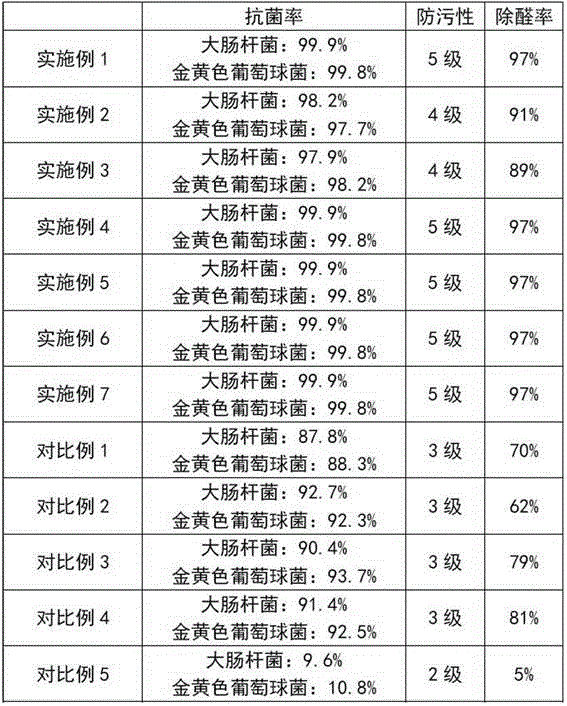Antibacterial and aldehyde-removing polyurethane composite material for 3D printing
A composite material and 3D printing technology, applied in the direction of additive processing, etc., can solve the problems of antibacterial, antifouling and self-cleaning functions, enrichment of pollutants, adverse effects on human health, etc., to increase antibacterial and aldehyde removal effects, The effect of widening the range of application
- Summary
- Abstract
- Description
- Claims
- Application Information
AI Technical Summary
Problems solved by technology
Method used
Image
Examples
preparation example Construction
[0019] (4) The preparation method of graphene / calcium carbonate composite filler is as follows: add 1 part of graphene into 100ml deionized water, and disperse for 200min under 800kW ultrasonic vibration and 1300r / min centrifugal speed to prepare graphene dispersion; Add one part of quantum dot calcium carbonate to 500ml deionized water, and disperse for 300min under 1300kW ultrasonic vibration and 1500r / min centrifugal speed stirring to prepare a calcium carbonate dispersion; slowly drop calcium carbonate dispersion into the graphene dispersion under 100kW ultrasonic , sonicated for 60 minutes, then suction filtered and dried to prepare a graphene / calcium carbonate composite filler.
[0020] (5) The nano-silver / TiO 2 The preparation method of antibacterial material is as follows: add 0.01mol L to 200ml -1 HNO 3 Add 0.79g AgNO to the solution respectively 3 , 5g TiO 2 Nanotubes, 0.5g dispersant sodium hexadecyl sulfonate, ultrasonically dispersed for 60min, then magnetical...
Embodiment 1
[0025] An antibacterial and aldehyde-removing polyurethane composite material for 3D printing, which consists of the following raw materials in parts by weight: 100 parts of polyurethane, 8 parts of composite filler, 2 parts of functional material, 0.2 part of light stabilizer, 5 parts of coupling agent, fluid 0.1 part of leveling agent, 3 parts of dispersing lubricant and 0.5 part of antioxidant. The composite filler is composed of graphene / SiO in a weight ratio of 3:2 2 The composite filler is composed of graphene / calcium carbonate composite filler.
[0026] The preparation method of this composite material comprises the following steps:
[0027] (1) Pretreatment of polyurethane raw materials: pulverize polyurethane raw materials into 300-mesh powder, disperse them in pure water, ultrasonic (power 300W) for 1 hour, and microwave irradiation (2500MHz, temperature controlled at 85°C) for 1 hour while ultrasonic; Stop ultrasonic and microwave irradiation, wash, discharge, and...
Embodiment 2
[0033] Based on Example 1, the difference is: 1 part of functional material. The tensile strength of the prepared polyurethane composite material is 24.05MPa, and the Young's modulus is 0.05GPa.
PUM
| Property | Measurement | Unit |
|---|---|---|
| The average particle size | aaaaa | aaaaa |
| Tensile strength | aaaaa | aaaaa |
| Young's modulus | aaaaa | aaaaa |
Abstract
Description
Claims
Application Information
 Login to View More
Login to View More - R&D
- Intellectual Property
- Life Sciences
- Materials
- Tech Scout
- Unparalleled Data Quality
- Higher Quality Content
- 60% Fewer Hallucinations
Browse by: Latest US Patents, China's latest patents, Technical Efficacy Thesaurus, Application Domain, Technology Topic, Popular Technical Reports.
© 2025 PatSnap. All rights reserved.Legal|Privacy policy|Modern Slavery Act Transparency Statement|Sitemap|About US| Contact US: help@patsnap.com

